A Detailed 3D Printer Troubleshooting Guide
Are you having troubles with your 3D printer? That’s pretty much par for the course for 3D printing. With so many moving parts and parameters to adjust, getting your 3D printer to work just right takes experience, knowledge of how 3D printing components works, and perhaps even a little bit of luck.
To make this process just a little easier, we have compiled a list of the most common problems encountered in 3D printing. For each problem, we’ll look at the possible underlying causes and propose a series of solutions arranged from the easiest to the most complex.
The printer is not printing
You’ve processed the model in your slicer, loaded it up to the printer, finished all calibration procedures, only to find that your printer is either not starting up or is not extruding. The problem could be traced to either an improper initialization or something that is preventing your printer from extruding.
Possible causes:
- No filament detected
- The nozzle is clogged
- The filament has snapped inside the extruder
- The filament has been stripped
Troubleshooting steps:
- No filament detected
An empty filament spool should be pretty hard to miss in most desktop 3D printers, but some models have the filament enclosed in some container or otherwise have them hidden in the back to improve aesthetics. This should be the first step to addressing a 3D printer that refuses to start printing – check if you still have filament in the spool.
Some 3D printers also have failsafe systems that can detect if you’ve run out of filament on your spool. These are useful for preventing hours of wasted printing time should your filament run out in the middle of a project. However, these sensors can also fail and erroneously detect an empty filament spool.
Should this be the case, your 3D printer should have a function for overriding the failsafe system. You can use this function so that you can just print your next project, but you’ll likely have to get that failsafe system fixed by the manufacturer.
- Clogged nozzle

A clogged nozzle can happen due to several reasons – leftover filament melting inside the nozzle or impurities in the filament getting burned and solidifying. Getting some residual filament melting inside the nozzle commonly happens when changing over from one filament to another.
A clogged nozzle doesn’t just happen suddenly. You can usually see signs of a clogged nozzle affecting the quality of your prints. Common signs include under-extrusion, burnt specks of filament being extruded from the nozzle, or very small nicks appearing on the walls of your finished print. Eventually, filament buildup can cause the nozzle to get completely blocked.
There are a lot of ways to address a clogged nozzle, as we have already written about in a previous article. The complexity of cleaning a nozzle will depend on how heavily it has been clogged. You might be able to melt away any leftover filament by simply heating the nozzle or remove any stubborn clogs by pushing a pin into the nozzle.
You can also do a “cold pull” of the remaining filament by pushing a piece of Nylon filament through the nozzle while it is heated up to around 250 C. While Nylon should still remain fairly viscous at this temperature, all other filaments will have already melted. What you want to see is some of the leftover filament being extruded out of the nozzle along with Nylon.
In a worst-case scenario, you may need to dismantle the nozzle completely and soak it in acetone. This may be necessary if the clog was caused by burnt residual material or impurities. Just soak the nozzle in acetone for about half an hour and make sure to let any residual acetone vaporize from the nozzle before putting it back in the 3D printer.
- Filament snapping inside the extruder assembly
This problem typically happens in 3D printers with Bowden extruders but can also happen if the idler in the extruder is set too tightly. Naturally, the filament snapping inside the extruder will interrupt with normal extrusion and may result in a failure of the printer’s startup.
If your filament snaps inside the extruder, the first thing you need to check is the quality of the filament. Old or poor-quality filament, as well as composite filaments, can be exceptionally brittle. If your filament has an inconsistent diameter, this can also lead to inconsistencies in tension on the idler. Try swapping in another filament and check if the problem will persist.
If it seems like the filament is snapping right at the point where it meets the extruder gears, you may have to loosen up the idler. Be careful not to set it too loose, as that can also lead to poor extrusion.
Finally, make sure that your printing temperature is set at the proper value to avoid excessive tension in the extruder.
- Stripped filament
A stripped filament is another common outcome of excessive tension in the idler and extruder gear section of the 3D printer. What happens is that the teeth of the extruder gear shave the plastic off the filament. These pieces of plastic then get into those gear teeth, effectively eliminating the ability of the gear to “bite” into the filament. Over time, this will result in serious extrusion problems.
What makes a stripped filament problematic is the fact that you’ll likely have to dismantle the extruder assembly just to access the extruder gear. You’ll then have to remove all the stuck plastic filament inside the hobs of the gear. This isn’t all that complex, given that you remember how to put the extruder assembly back together again.
Poor first layer
A crucial step in 3D printing is getting that first layer just right. It acts as the physical base to the rest of your print and makes sure that it is tethered well to the build platform. Depending on how well the first layer prints, it can also give you the opportunity to step in fine-tuning your printer settings before anymore filament is wasted.
Possible causes:
- Improper nozzle height setting
- Extruder needs priming
- Adhesion problems
Troubleshooting steps:
- Adjust the nozzle height
Getting the proper nozzle height is something that requires balance. You want the nozzle to be just close enough to the bed to slightly “squish” the filament and help with and adhesion, but not too close so as to impede extrusion. A nozzle that’s too high will result in the filament cooling down rapidly and can result to more bed adhesion problems.
A good rule of thumb to follow is to set the initial layer height to a fraction of the size of your nozzle. For instance, a setting 0f 0.3 mm usually works for a standard 0.4-mm nozzle diameter. This can be easily adjusted using the z-offset value in your 3D printer settings.
- Level your bed
Any attempts to adjust the z-setting of your nozzle will be futile if your bed has not been properly leveled. This is something you should be doing regularly but is particularly important if you’ve just installed a glass print bed on your printer.
Some 3D printers have an auto-leveling feature which only takes a few minutes to complete and takes all the hard work out of your hands. Don’t fret if yours doesn’t have such a feature – manual leveling is easy and doesn’t require any fancy equipment.
We’ve already covered the manual bed leveling procedure in some of our past articles, but we’ll summarize it here for convenience. You basically just need to set the nozzle at the home or zero position and insert a thick index card between the nozzle and the bed. The height of the bed should be adjusted such that there only minimal resistance between the bed and the nozzle. This needs to be repeated at various points along the bed, taking note that the print bed has four adjustment screws.
- Prime your extruder
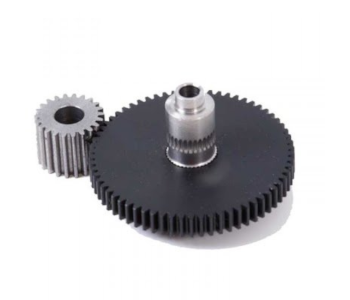
Printing a perfect first layer can be tough as extrusion problems usually come up on the first few inches of filament that gets extruded through the nozzle. The optimal printing temperature may not have been reached yet, which can result in inconsistencies in flowrate and extrusion performance.
An easy way to remedy this problem is to ‘prime’ your extruder by printing something else before the first layer. This is best done with a skirt – a thin line of filament that mimics the outline of your design’s base layer. This will sit just outside your actual first layer, priming the extruder while also helping slow down the cooling effect of the outside air.
- Use a heated print bed at the proper temperature setting
Using a heated print bed provides a lot of benefits to a 3D printing project, no matter what project you’re working on or which filament you’re printing with. A heated bed improved bed adhesion and slows down the cooling of the filament, thus also helping to avoid warping problems. You’ll inevitably need more power to run your 3D printer with a heated bed, so watch out for those added costs.
Each filament material has an optimal print bed temperature range. We recommend setting your temperature at the bottom of this range and ramping up only if necessary.
- Use an appropriate adhesive
In most cases, a heated print bed does not fully solve a bed adhesion problem. A more reliable solution is a one-two punch of a heated bed that has been treated with some sort of adhesive. There are several adhesive options out there, the best choice of which depends on the filament you are printing with and the temperature of the heated bed.
When applying a liquid adhesive, make sure to apply them in a thin and even layer. There are also adhesive tape options that need to be applied in adjacent strips that do not overlap. Take note that placing adhesives on a heated bed can make the print stick so well that it can be difficult to remove.
Warping
Warping pretty much THE proverbial 3D printing problem. If you’re planning to print with filaments that print at 240 C or above, then you will probably want to check out this section. Solving the warping problem requires a combination of different strategies. Combine any of these methods to see what works for you.
Possible causes:
- Rapid cooling
- Poor bed adhesion
- Thermal stress accumulation
Troubleshooting tips:
- Slow down cooling
The first thing to do when printing with a filament that is prone to warping is to slow down the cooling of the filament as much as possible. Just to be clear, the molten filament starts to cool down as soon as it exits the nozzle. Due to the elevated temperature of such filaments, this cooling down naturally proceeds very rapidly and creates significant thermal contraction.
The first thing to do is to ensure that the cooling fan is activated for the whole duration of the project. However, ambient air is still a lot colder than the molten filament itself. To minimize the convective cooling effect of ambient air, we recommend placing a bed enclosure.
Some printer models already have built-in enclosures, but you can also opt to make one from scratch. The point is that the enclosure creates a “pocket” where hot air can be trapped.
- Use a heated bed AND apply adhesive
As we’ve mentioned, using a heated bed massively helps with bed adhesion, as does applying a layer of adhesives. When working with a filament that is prone to warping, both of these measures will be necessary.
Not only does a heated bed improve bed adhesion, but it also halts the cooling process to a set temperature, thus reducing the development of thermal stress. The heating effect somewhat cascades across the first layer and to the next couple of layers close to the print bed, thus tempering the effect of cooling on a print’s dimensional accuracy.
- Print with a raft or brim
If you find that your print is still warping despite using a heated bed, adhesives, and a bed enclosure with no cooling fan, the next recourse would be to print with a raft or brim. This is an option that is available in most slicer software which effectively extends the “base” of your print or the extent of the first layer.
Merely increasing the area of contact between the print bed and the first layer results in a massive improvement in bed adhesion. The downside of taking this measure is that you use up more filament on your model than expected.
- Avoid accumulation of thermal stress
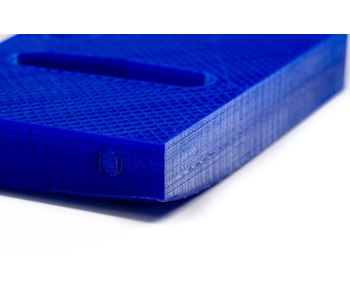
Development of thermal stress is a natural phenomenon that the filament material experiences as it cools down. Rather than counteract it, another viable strategy is to manage the thermal stress so that it does not accumulate to a point where it causes warping.
A good way to manage thermal stress is to remove sharp corners from your design, opting instead for rounded corners. This avoids the problem of thermal stress accumulation, which often happens around these sharp corners. The result is a more even distribution of thermal stress which, hopefully, prevents warping.
This is probably the measure that requires the most work. Not all designs can be changed quickly to remove sharp corners, particularly complex ones that have a lot of edges. Even if it were possible, a redesign of this scope can vastly change the aesthetics of a 3D model.
Oozing, stringing, and blobs
This problem is most commonly referred to as “stringing” because of the characteristic plastic strings that it creates. Calling it by its alternative name – oozing – more aptly describes exactly what happens which may cause the problem.
Oozing or stringing typically happens when a portion of the molten filament oozes out of the nozzle at moments when the nozzle is not supposed to be extruding. The strings are created by the movement of the nozzle as the filament slowly oozes. If the problem is bad enough, some of the filament can come out as blobs instead. In any case, the visual appeal of a 3D print suffers massively when this problem comes up.
Possible causes:
- Printing temperature set too high
- Insufficient retraction
Troubleshooting tips:
- Enable retraction
Retraction is your most valuable weapon against stringing. Enabling retraction results in the extruder gear rotating in the opposite direction for sections of the project where the nozzle has to travel across the print bed without extrusion. In terms of the internal mechanics, retraction pulls back a small section of the filament inside the extruder assembly.
By doing this, you relieve the pressure on the section of the nozzle which contains molten filament. It also creates a slight vacuum effect to hold the filament in place. Although gravity will still likely win against this suction pressure, retracting at least delays the inevitable so that the nozzle can move to a section where it needs extrusion to start up again.
- Lower printing temperature
As with most other fluids, exposing a thermoplastic to elevated temperatures proportionally reduces its viscosity. This means that it more easily flows. Thus, a higher printing temperature creates molten plastic that will more easily ooze out of the nozzle. If you’re still having stringing problems with retraction, then you might want to consider reducing your printing temperature by 5 or 10 C.
Take note that a lowering of the printing temperature should come with a reduction in printing speed. This will ensure that the filament receives the same amount of heat that it needs to be completely molten.
- Increase movement speed
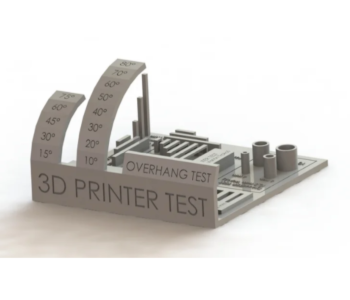
As we’ve mentioned, oozing out of filament from the nozzle is inevitable. The only thing you can do is to either delay it or have the print head reach its destination as fast as possible. By increasing the travel speed of the print head, you make it less likely that the filament will ooze out in all the inappropriate places.
Theoretically, a print head should be able to move as quickly as 300 mm/s. However, we suggest that you exercise caution and only ramp up the speed in 10 mm/s increments. The print head of a 3D printer is pretty heavy and having it move too fast increases its momentum. It may reach a point where it overshoots the target destination, resulting in problems that are much more serious than stringing.
Poor bridging and overhangs
Bridges and overhangs are elements of 3D printing that become more unavoidable the more complex your design gets. As their names imply, these are basically a section of a 3D model that have no supports underneath, instead relying on the strength that the material develops as it hardens.
While bridges and overhangs can be good design elements, they are also inherently risky as they can collapse if they are not well-designed.
Possible causes:
- Mechanical limitations
- Filament is too heavy
- Printing temperature is too high
Troubleshooting tips:
- Follow the 45-degree rule for overhangs
Whenever you print a model with an obvious overhanging feature, you must keep the 45-degree rule in mind. This states that an overhanging feature can support its own weight given that its angle from the vertical is less than or equal to 45 degrees. If you’re designing your own 3D model, you may want to consider this rule to avoid problems with collapsing overhangs.
- Follow the 5-mm rule for bridges
The 5-mm rule is pretty simple – a bridge that measures 5 millimeters or less across may not need an external support. The 3D printer achieves this by stretching the material across the gap. This tension allows it to create short bridges with minimal sagging. For bridges longer than 5 millimeters, support structures may be necessary.
- Use a chamfer
If an overhang with an angle of more than 45 degrees from the horizontal is unavoidable, you can “cheat” the mechanical limitation by designing it with a chamfer. A chamfer is basically just a series of angled segments that progressively become more horizontal but never violate the 45-degree rule. A chamfer somewhat alters the aesthetic of the design but allows you to incorporate overhanging features without needing to use support structures.
- Reduce the printing temperature
As we’ve said, a thermoplastic exposed to higher temperatures becomes more fluid, which means it has less strength. However, a thermoplastic also regains this strength as it cools down and becomes more solid. When printing models with overhangs and bridges, a good way to keep them from collapsing is to ensure that they cool down as quickly as possible.
By printing at the low end of the temperature range for your filament, you allow them to develop strength more quickly. Just be careful not to run into extrusion problems, which brings us to the next pointer.
- Reduce printing speed
A lowering of printing temperature should come with a reduction in printing speed. While this ensures that extrusion still proceeds as normal, slower printing also gives the filament of one layer more time to cool down and strengthen before it has to bear the weight of the next layer.
- Use a cooling fan
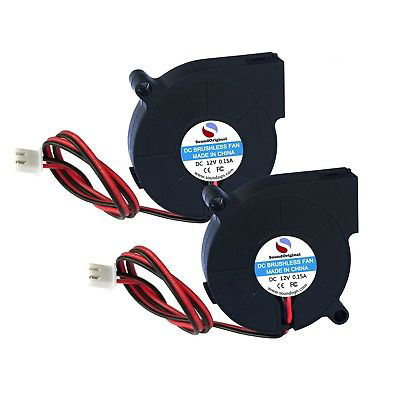
This step hardly needs explaining – you want your filament to cool down and strengthen as quickly as possible. If you are printing a model with overhanging features that have a risk of collapsing, then go ahead and set that cooling fan to the maximum speed. You may want to hold back on the first few layers, though, as bed adhesion may suffer from rapid cooling.
- Use supports
Although a fairly easy solution, adding support structures to a model is actually the last option. Support structures can be added automatically using just about any slicer software, adding pillars or trees underneath a model to keep it from collapsing. This is a reliable solution to overhangs and bridges and is almost foolproof.
There are several reasons why support structures aren’t as convenient as they appear. They can use up a lot of filament which all go to waste – not a good move whether you look at it in terms of cost or excess waste. Supports are also very hard to remove unless you have the luxury of being able to print with special support materials using a dual-extruder printer. In some cases, the actual print itself can get damaged during the support removal process.
Pillowing
Pillowing is a particularly troublesome problem because it only comes up when the print is just about finished. It usually manifests as gaps, bumps, or rough edges on the top surface of a print.
Possible causes:
- Warping of the top layer
- Insufficient infill
Troubleshooting tips:
- Increase cooling on the top layer
At its very core, pillowing can be attributed to a phenomenon we’re probably already familiar with – warping. The problem with warping in the top layer is that we do not have the benefit of a print bed to stick the filament to.
Knowing that warping is taking place makes it counter-intuitive to resort to cooling as a solution to pillowing. However, what we’re counting on is the filament developing strength rapidly enough so that the warping effect does not cause any deformations. Some users have even resorted to using desk fans to really speed up the cooling process of the top layer, often to great results.
- Reduce printing temperature and speed on the top layer
A more conventional solution to warping is to reduce the printing temperature, which can set specifically for the top layer. This reduces the thermal stress accumulation for the top layer and hopefully buys enough time for the filament to strengthen before warping has any significant effect. Naturally, you will want to slow down the printing speed to avoid any extrusion problems.
Although lower printing temperatures also results in poor layer adhesion, this is not much of an issue when you’re just altering the settings for the top layer.
- Increase top layer thickness
This more of a brute force approach to the problem – pour in more material into the layer so that it has a better resistance against the warping effects of thermal stress. Although you’ll inevitably have to use more filament material to print a thick top layer, this is still a more conservative option compared to the next item.
- Increase infill
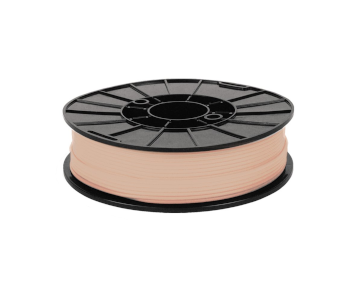
Infill patterns play a huge role in determining the physical properties of a 3D print with a hollow internal section. In the case of the top layer, the infill also acts as a ‘print bed’ – solid sections where the filament material can stick onto. By increasing the infill density of a model, the top layer has better layer adhesion and is less likely to warp.
An infill density of 12% is standard in most cases. If you are having trouble with pillowing, you may increase that value up to a maximum of 25%. Soft filaments (like TPU) or filaments that are prone to warping (like ABS) are more likely to need more drastic measures.
The reason we consider this the last option is that it can quickly increase both the amount of filament and the time you need to finish a print. It also alters the physical properties of the finished print, such as its weight and flexibility. If you have specific performance standards for your finished print or if you have a lot of products to make, then an increase in infill might not be the best solution for you.
Collapsing supports
Supports aren’t as foolproof a solution to overhangs or bridges as you might think. When placing supports using slicer software, you will be given several options on how the structure will be built. It takes careful consideration of the load that a structure will support to determine which option is most suitable.
Possible causes:
- Improper support type
- Excessive vibration
- Brittle filament
Troubleshooting tips:
- Select the most optimal structure type
Structure types are fairly standard across different slicer platforms. Tree-type supports are more commonly used as they minimize the points of contact between the support structures and the actual 3D print, which means that they are easier to remove. However, they are only suitable for small overhangs or those with more organic shapes.
Large overhang features are more compatible with lattice-type supports. These supports are more columnar but can also be printed with different patterns. A grid pattern is ideal in most circumstances, as it provides the best mechanical support. A simple linear pattern can be used for less demanding support requirements and is also a little easier to remove. Another disadvantage of lattice-type supports is that they inevitably use up more filament material.
The height of the model also plays a role in determining which support to use. If a support structure has to be built very tall, it can also collapse if it does not have a thick and strong base. In this case, you may want to consider lattice support with either a grid or triangle pattern.
- Reduce printer vibration
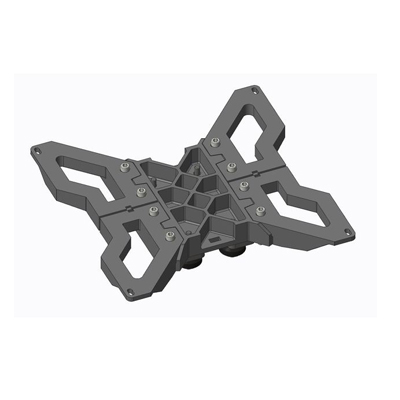
Support structures are basically thin and tall columns, which makes them prone to collapse. This risk becomes much more pronounced if your 3D printer is vibrating more than usual. It can be hard to pin down the cause of excessive vibration – it can be something as simple as loose bolts, or something as complex as your stepper motors needing to be calibrated.
Excessive vibration is likely to cause more problems such as misaligned layers, so it would be best to stop your project and work on solving it first. Tighten as many of those nuts and bolts as you can and give it another try.
- Use a more flexible filament
Since they are thin and tall, the main mode of failure of support structures is cracking. This means that you absolutely do not want to use a filament that is brittle, either because of the material or because the filament is quite old.
If you are still having problems with collapsing supports after using more robust geometries or reducing vibration, you may want to try printing the same project with a different filament spool. Use a fresher spool this time.
Poor resolution
Resolution in 3D printing is a bit tough to define because there are different parameters that influence resolution in the X and Y axes than in the Z-axis. In any case, the resolution of a 3D printer has an effect on how well it reproduces the fine details of a model.
Possible causes:
- Warping
- Nozzle size limitation
- Printing too fast
- Collapsing features
Troubleshooting tips:
- Use a filament that is not prone to warping
Unfortunately, thermal contraction is a natural part of 3D printing and something that you’ll just have to deal with. This can be problematic if you’re printing a highly detailed model, as the shrinking process can dramatically alter the appearance of these fine details. The easiest solution would be to print with a filament that is not as prone to warping – any filament-based on PLA or PETG would be a good option.
- Use a smaller diameter nozzle
Swapping your standard nozzle for a smaller one could be the single most significant solution to achieving better resolution for your 3D prints. The diameter of the nozzle is the limiting factor behind a 3D printer’s resolution, as it simply cannot reproduce details that are smaller than the nozzle. Don’t forget to change your layer height accordingly to a smaller number.
There’s a huge drawback to swapping out to a smaller nozzle – printing with thinner layers means that your 3D printing projects are going to take so much longer.
- Print hot but slow
If you want your prints to be as detailed as possible, it seems that you’ll have to take a huge hit when it comes to printing time. Even when using a smaller nozzle, it is often recommended to print slow and at high temperatures. Reducing extrusion speed may be difficult at high-temperature settings, so slowing down the travel speed of the print head would be a better idea.
By printing slow, you give the filament material more time to cool down. This allows for better retention of details, as features don’t get altered by the weight of additional layers. At the same time, printing at high temperatures makes the filament flow better – just watch out for stringing problems.
- Use support structures
Gravity plays a huge role in retention of fine details, especially if these intricate designs are found on overhanging features. The lack of support in these overhangs will likely make the fine details sag as the filament cools, altering their appearance in ways that are more than subtle. If you want to print an extremely detailed model, you might have to bite the bullet and place as many supports structures as needed.
Poor dimensional accuracy
3D printing prototypes that need to have highly accurate measurements can be very challenging in FDM printers.
Possible causes:
- The printer frame is not properly aligned
- No z-axis tolerance
- Extruder needs calibration
Troubleshooting tips:
- Make sure your 3D printer frame is perfectly aligned
No matter how exacting your slicer settings are, you will never get a perfect 3D print if you have alignment issues in the frame of your 3D printer. This is a problem that frequently pops up in 3D printers that need to be assembled.
Frame alignment is one of the most important things to prioritize during the assembly of a 3D printer. Even a misalignment in the magnitude of a tenth of an inch can lead to quality issues down the line. Our advice is to take the time to correct minor misalignments during assembly, rather than suffer through badly made projects before having to take the whole 3D printer apart again.
- Incorporate shrinking in the z-axis
As mentioned, the shrinking of the filament material is an unavoidable phenomenon in 3D printing. Cooling down of the plastic will inevitably result in thermal contraction. Molten filament is also a semi-fluid substance which will tend to “flow” with gravity. This combination of compressive forces means that the shrinking of a 3D printed project is more pronounced in the z-axis.
With this knowledge, it is only prudent to incorporate a good amount of tolerance in the z-axis during the design phase. Different filaments respond in varying degrees to thermal contraction. If you are targeting exact measurements, you want to add anywhere between 3% to 5% to the measurements of your model.
- Calibrate your extruder

When a model is processed by a slicer software, it breaks down the necessary steps needed to recreate that model and turns it into a series of commands for the 3D printer to follow, called the g-code. This means that the geometry of the model is converted into commands that the 3D printer can understand.
One of the more crucial elements of a g-code is the number of “steps” that the extruder motor needs to make when extruding filament. This is determined by calculating the length of filament needed to print the model and converting it to the number of steps via a pre-set calibration value.
The problem with relying on a calibration value is that the actual performance of the extruder tends to change over time. This means that the actual length of filament extruded per each step of the extruder motor may drift from the calibration value, resulting in dimensional errors. If you’re sure that your printer frame is aligned and that you have incorporated shrinking into your 3D model, then an extruder calibration may be in order.
We have already discussed in detail the procedure for extruder calibration in a past article. It will require you to dive into your 3D printer’s g-code to make the necessary changes. It’s not as complicated as it sounds – the g-code isn’t a programming language at the same level of complexity as Java or even C++.
Elephant’s foot
An elephant’s foot is exactly what it sounds like – a flared base layer that creates distortion in the first few layers of your print. This isn’t as big of a problem as warping but can nevertheless be an issue if you’re after perfect aesthetics.
Possible causes:
- Print bed temperature set too high
- Nozzle set too close to the print bed
Troubleshooting tips:
- Lower the print bed temperature
The characteristic flaring of an elephant’s foot happens when the base layer ends up having to support the weight of the layers above it before it has a chance to cool down and strengthen. If your bed temperature is set too high, then the filament material will simply be prevented from solidifying and developing any strength.
The easiest solution an elephant’s foot is to lower the bed temperature in small increments – around 5 C at a time. Be careful about reducing the temperature too quickly, as you may end u with warping issues.
- Increase the nozzle’s height
If you’re already at the lower end of the acceptable bed temperature range of your filament and still experiencing elephant’s foot, then you may try increasing the height of the nozzle so that the filament doesn’t get squished so much. As with the bed temperature, you should do this in increments – about 0.1 mm at a time. An excess in the z-setting of the nozzle can lead to bed adhesion problems.
- Level the print bed
If you can’t lower the bed temperature any longer and you’re not getting any results with tweaking with the nozzle height, then there could be a problem with your print bed. Again, this is a topic we have covered in an older article.
Leveling your print bed should result in a more consistent in terms of bed adhesion and cooling. In any case, bed leveling is something that you should be doing to keep your 3D printer in tip-top condition.
Missing layers
Missing layers can be one of those frustrating problems in 3D printing because you only seem to notice them when the project is finished. These layers probably aren’t “missing” per se, but an uneven movement of the nozzle in the z-axis may have resulted in a clearly visible horizontal gap.
Possible causes:
- Temporary under-extrusion
- Z-axis movement of the nozzle is restricted
- Improper layer thickness settings
Troubleshooting tips:
- Do a thorough mechanical check
Missing layers can be a difficult problem to solve because there are so many possible reasons for it to happen. Whenever you encounter missing layers in your finished print, take it as a sign to de a regular mechanical check of your 3D printer. In this case, you will want to pay attention to all the components responsible for the movement of the print head along the z-axis.
This checklist for inspection should include the guiding rod for the z-axis movement (check for misalignment or deformation), the status of the bearing between the print head and the rod (a worn-out bearing can cause vibration), and if there is enough lubricating oil to smoothen the motion. While you’re at it, you might as well do the same checks for the rods that control movement in the x and y directions.
- Make sure that layer thickness corresponds to full steps of the motor

This is something you might have missed, especially if you’ve been swapping different nozzles in and out. The setting for your layer thickness should always be multiples of the motor’s full steps, which you should be able to check via the 3D printer’s g-code.
Missing layers due to this error should be easy to spot, as your finished print should end up with multiple missing layers in fixed intervals.
- Check for under-extrusion
A missing layer may just be caused by temporary under-extrusion. This is typically caused by inconsistencies in filament diameter, which you should be able to check quickly with a caliper. Unfortunately, this is a sign of a low-quality filament which means you either have to ditch the filament altogether or just tough it out until you use up all the filament.
Intermittent under-extrusion can also be a sign of buildup in your nozzle, which could eventually cause it to clog. If you’re noticing missing layers becoming more frequent, you may want to think about cleaning up your nozzle.
Misaligned layers
Misaligned layers are easy to spot – they look like the print was split in half and the upper half has been shifted slightly from the bottom half. There’s a myriad of possible reasons for layers getting misaligned but the most common causes have to do with the print head.
Possible causes:
- Print head is moving too fast
- Impeded movement in the x and y directions
Troubleshooting tips:
- Reduce print head movement speed
The print head of an FDM printer is fairly heavy. As it moves around, it carries with it a lot of momentum. By increasing the settings for the movement speed of the print head, this momentum is further increased.
The problem lies in the fact that an object moving with a lot of momentum will also require a lot of power for it to stop. This happens every time the print head moves from one position to another – it moves rapidly and comes to a sudden stop. When the momentum of the print head is too high, it tends to overshoot its target.
Once a print head overshoots its target even once, it will result in a shifting of all the succeeding layers. Print heads have no mechanisms to detect or make up for errors in target locations.
- Do a mechanical check
If you’re still not having any luck fixing the misaligned layers by slowing down the print head’s movement speed, you may have to check all mechanical components involved in the x and y movement of the print head. This includes the guide rods, bearings, and the pulleys and belts that connect the print head to the motors.
As with the troubleshooting guide for missing layers, you need to check the rods for signs of misalignment and deformation, as well as the bearings for signs of wearing out. The belts need to be a taut but not too tight. Pulleys should be free to rotate with little resistance. An application of lubrication oil to these components should also be helpful.
Difficult print removal
Here is another one of those problems that can be frustrating as it can damage a project that has already been finished. While getting your print to stick to the bed is great for staving off warping, it’s also possible to get your print to stick too much. In a worst-case scenario, you could end up damaging the finished print or the print bed during the process of removal.
Possible causes:
- Print bed temperature is too high
- Too much contact area between the print and the bed
- The nozzle is too close to the bed
Troubleshooting tips:
- Be patient
When your print seems stuck in your print bed, the first thing you need is patience. Maybe your print just needs more time to cool down. The filament material and the print bed are made of materials with very different thermal contraction coefficients, and it is this inequality in contraction behavior that should cause the finished print to “pop-out” when it’s cool enough.
Maybe your print needs a little prodding before it can be removed. The best tool for the job would be a palette knife, which you can slowly but firmly insert between the print’s base layer and the bed.
- Cool it down
When it comes to removing the finished print, cooling is your best ally. One thing to remember is that you don’t need to stop at room temperature. If you have a glass print bed, take it off your printer and set it down somewhere else. Get a few packs of ice and set it near the junction of the end and your finished print. Hopefully, the extra thermal contraction will provide enough force for the print to be removed automatically.
- Use an adhesive tape
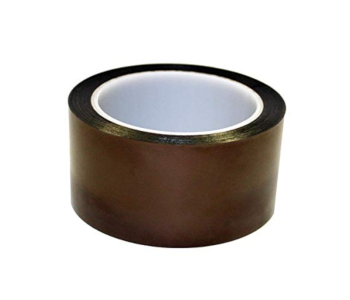
Painter’s tape or Kapton tape are two very good options for bed adhesives. They are just as effective as any other liquid adhesive but have the added benefit of being very easy to remove from the print bed. Simply peel off the layer of tape from the bed and you no longer need to worry about damaging either the bed or your finished print.
Of course, you’ll now have to deal with the leftover tape sticking to the bottom side of your print. You should be able to remove this by soaking in water or by a small application of an appropriate solvent like acetone. If all else fails, you can always use a brute force method and sand them away.
- Reduce the bed temperature
From this step onward, we’ll be looking at ways to prevent the problem from happening, starting with the bed temperature. While a heated bed temperature is a huge help in adhesion and is probably the most useful tool to prevent warping, setting the temperature above the recommended values can result in the filament sticking a little too well to the bed.
To be safe, it’s always a good idea to set the bed temperature in the lower end of the recommended bed temperature range for the filament you are using. Increase this temperature only if you run into warping or other bed adhesion problems.
- Increase the nozzle height
The initial z-setting of the nozzle is deliberately set to be a fraction of the layer thickness to create a “squishing” effect for the base layer. This is another effective method of increasing bed adhesion. If you find that your print sticks too much, then increasing the initial z-setting by 0.1 or 0.2 mm should help reduce the problem.
- Put some holes in the base layer of your model
This is going to take a lot of forethought, but if your model simply has too much contact area with the print bed, then you can simply cut holes inside the base layer. This is probably only possible if you’re generating your own model. Through creative means, you may be able to use this strategy without affecting the model’s overall aesthetics.
Popping noises or steam coming out of the nozzle
Hearing a popping noise of seeing steam coming out of the extruder assembly will probably have you getting worried about damaging your 3D printer. When this happens, stop printing immediately – the project you’re working on is almost certainly already ruined anyway.
Possible causes:
- Wet filament
Troubleshooting tips:
- Dry your filament before use
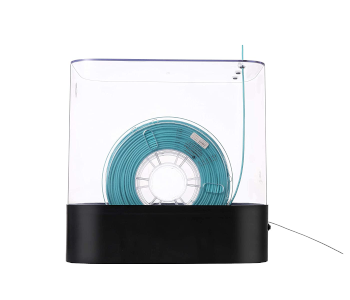
Using wet filament is a mortal sin in 3D printing. Not only will you end up vaporizing the moisture in the hot end nozzle, but you will also end up with prints that have visible nicks and holes. Printing with wet filament can result in more serious problems like clogged nozzles damaged extruder components.
To avoid printing with wet filament, make sure that all your filament spools are stored in airtight bags with a small amount of desiccant. This isn’t a foolproof method. You might still need to dry your filament in an oven or in a dedicated filament dryer before use.
In any case, salvaging a print that has been printed with wet filament is virtually impossible. It would be best to swap in a different spool and start over.
Final thoughts
When you buy a 3D printer, one thing you’ll have to expect is that you’ll be spending a lot of time taking it apart, tweaking its components, adjusting parameters, and doing trial and error. You might also end up having to understand g-code commands and 3D modeling. This is all but inevitable, so now would be a good time to invest in a good set of tools and accessories.
We hope that this primer on the most common problems encountered in 3D printing will prove to be useful for you. With each problem you solve, your goal should be to understand why the problem has occurred and how the solution addressed it. By understanding the science behind 3D printing, you will be better equipped to address 3D printing issues that are beyond the scope of this guide.

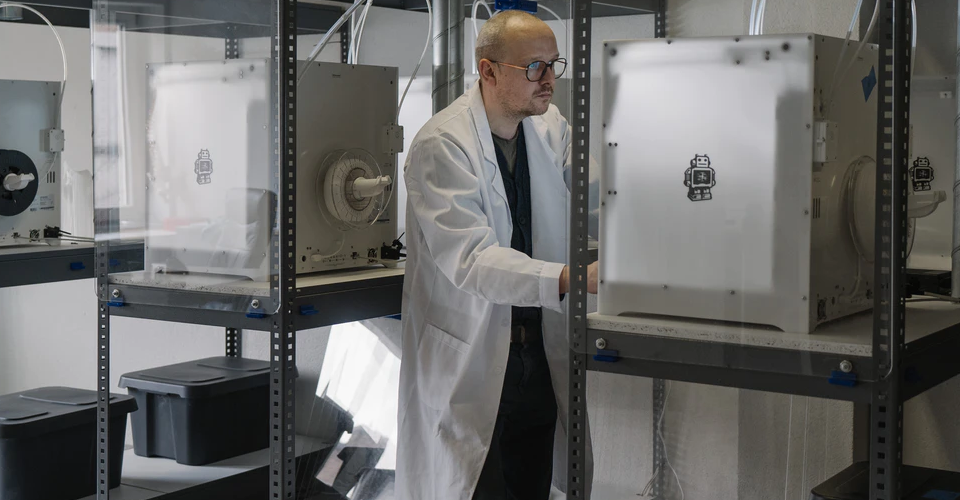

Hello, whoever is reading this. When I try to 3D print anything that is not the cat that already comes with the printer for your first print, my extruder keeps printing off the bed. Can you help me with this?